The 'M1' chip, which will be the first Apple Silicon for Mac, has appeared, with the world's fastest CPU manufactured by the 5nm process
`` M1 '', Apple's first SoC for Mac, was announced. The M1 has dramatically improved performance per watt compared to the SoC that has been adopted in conventional Macs, and is a chip that has the potential to turn all Macs into completely different products. It is said that it is.
Apple Events-Apple
https://www.apple.com/apple-events/
Apple Event — November 10 — YouTube
Finally, the 'M1' chip, which will be the first Apple Silicon for Mac, has been announced.

Previously, Macs had separate chips for processor, input/output, security, and memory.
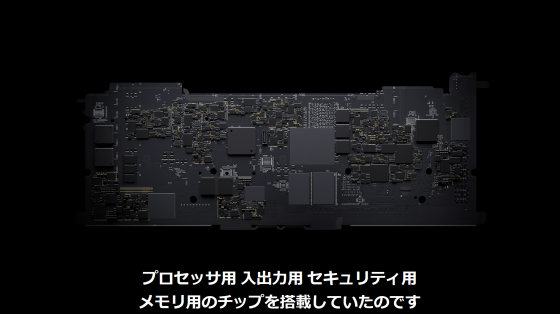
However, M1 integrates these technologies into one SoC. This makes it possible to achieve simple, efficient and excellent performance.
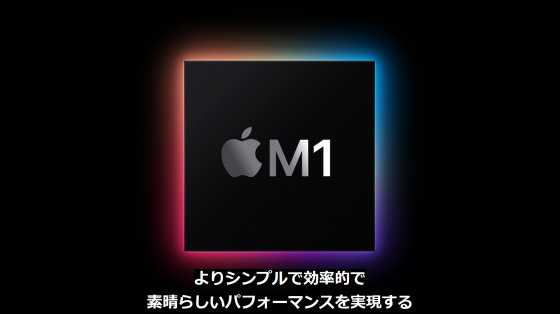
The M1 also features Unified Memory Architecture (UMA).
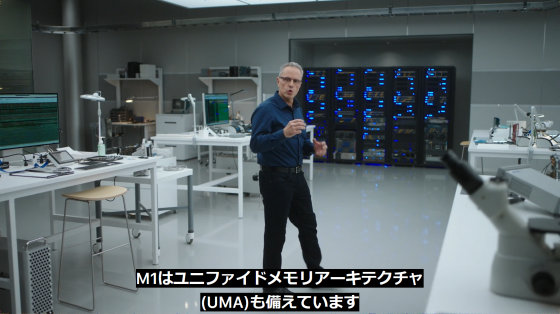
The M1 combines high-bandwidth, low-latency memory into a single pool in a custom package. As a result, all technologies in the SoC can access the same data without copying between multiple memory pools. This dramatically improves the performance and power efficiency of the M1 chip.
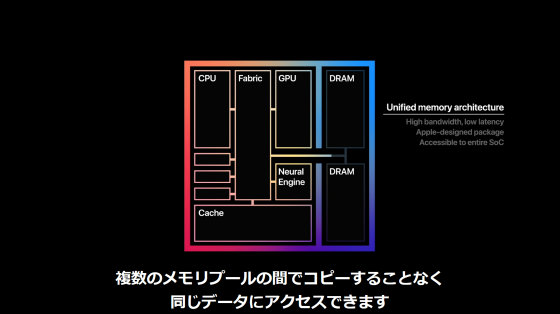
The M1 chip is also the first PC chip manufactured on the 5nm process. Their construction is extremely complex, as they contain surprisingly small transistors that can be measured at the atomic scale.

The M1 has 16 billion transistors. All these transistors are used to give the M1 top performance and cutting edge technology.

The M1's amazing performance is made possible by a CPU that consists of two types of cores: high performance and high efficiency.

The M1 CPU has 8 cores, of which 4 high-performance cores and 4 high-efficiency cores. The four high-performance cores are designed to execute individual tasks or threads as efficiently as possible while maximizing performance.

Therefore, Apple appeals that it is the fastest CPU core in the world among power-saving silicon.

With four high-performance cores, the M1 also takes a leap forward in performance for multi-threaded workloads.
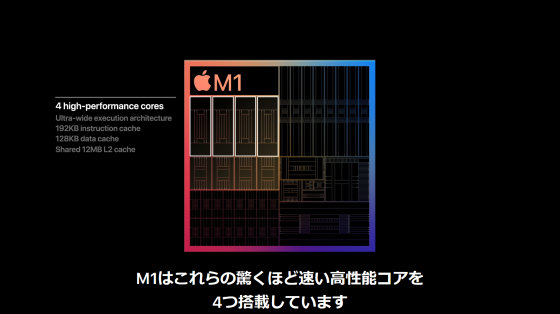
In addition, it also has four high-efficiency cores to handle light workloads efficiently. Succeeded in reducing power consumption to 1/10 of conventional power consumption while achieving excellent performance. High-efficiency cores are most efficient for light tasks. Even with just four high-efficiency cores, it achieves the same performance as the current dual-core CPU-equipped MacBook Air.

Additionally, the M1 features a state-of-the-art performance controller that determines in real-time where to run your code for maximum performance and efficiency. As a result, the M1's 8-core CPU seems to be a CPU with outstanding performance among those that have been made so far.

It is also important to achieve these high performances with as little power as possible. In fact, the M1 chip CPU is the world's highest CPU performance per watt and is the industry leader.

Looking at the performance per watt of the M1 CPU in the graph, it is as follows. Performance is up to twice as high as the latest PC chips ...
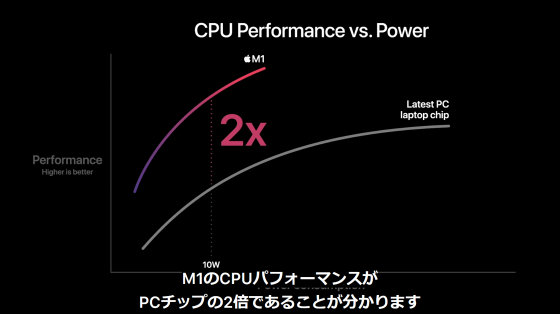
It delivers that high performance with only a quarter of the power.
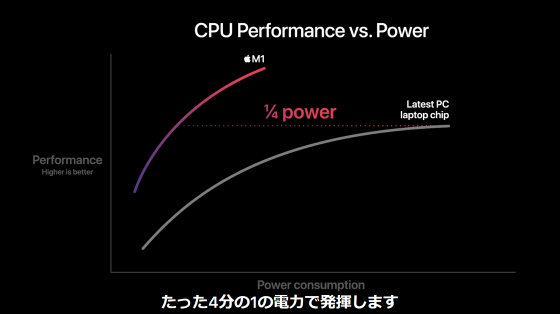
Having succeeded in creating CPUs with unprecedented levels of performance, Apple also designs GPUs that deliver maximum graphics performance within the thermal design framework of each product.

As a result, a balanced system with a GPU that complements the amazing performance of the CPU was completed.

Since PCs usually use integrated graphics, it seems that they can not achieve the balance that the M1 achieved.

PCs need to use discrete chips to get great graphics performance. Therefore, it has the disadvantage of consuming a lot of power. However, the M1 has both the amazing performance of integrated graphics and low power consumption.

The GPU in the M1 is the result of years of in-depth analysis of Mac applications.

Equipped with up to 8 GPU cores, the M1 can process nearly 25,000 threads at once.

Combined with amazing efficiency, from teraflops to texture bandwidth to fill rate, Apple says the M1's GPU is exceptional.

The graph below shows the GPU performance and power usage of M1. Compared to the conventional GPU for PC (gray line), the graphics performance is twice as much ...

Power consumption is one-third. That's why 'the M1 has the world's fastest integrated graphics,' Apple said.

Apple says it packs a variety of custom technologies into the M1 chip, not just the CPU and GPU.

The M1 chip is equipped with the most advanced Neural Engine. 16-core design capable of massive operations of 11 trillion operations per second.

The entire M1 chip is engineered for machine learning, so tasks like video analysis, speech recognition, and image processing are unmatched by previous Macs.

Additionally, the M1 integrates the latest generation Secure Enclave, making it faster than ever and bringing best-in-class security to your Mac.

So, a review of the M1 chip. The M1 leads the industry in performance per watt and features cutting-edge technologies such as Neural Engine, Thunderbolt, USB 4, Secure Enclave and the latest ISP.

Regarding the innovation with the M1 chip, Apple says, 'Never before has a Mac had such a significant chip upgrade.'

With the introduction of the M1 chip, all Apple products will feature tight hardware and software integration. This is the key to a great user experience.

To further integrate hardware and software on the Mac, Apple has adopted Mac-specific software workloads to optimize the architecture of the M1. macOS Big Sur is developed to make the most of the M1, just as iOS and iPadOS make the most of the A series chips.
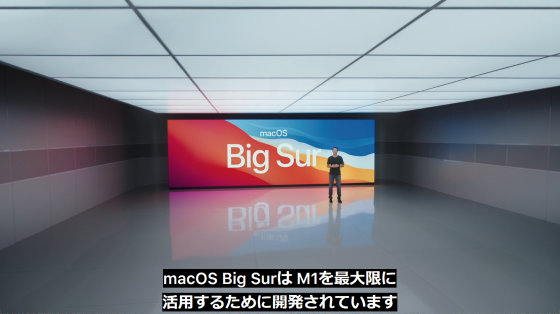
macOS Big Sur brings a bold new design, powerful updates to apps like Safari and Messages, and the latest industry-leading privacy improvements.

By combining hardware and software and designing all systems together, we succeeded in further evolving the Mac.

So, the time has finally come to reveal the Mac with the M1 chip.

Plus, applications launch blazing fast, and Safari, already the fastest browser in the world, gets even better with the M1 chip. With the M1 chip, Safari will execute JavaScript 1.5 times faster and respond 1.9 times faster.

The whole system is remarkably snappy, and the system animations are very smooth.

The M1's blazing speed combines with macOS technologies like Metal to make the most demanding applications run dramatically.

So you can easily render 3D animations and edit RAW footage.
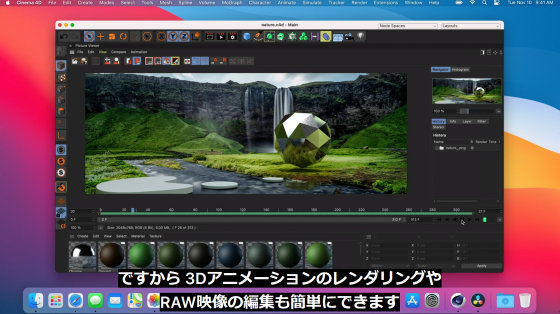
Part of the secret behind this breakthrough performance is the M1's unified memory architecture.

The reason why macOS was made on Apple Silicon is to use the same data format for video decoding, GPU, display, etc. It eliminates the burden of copying and converting. And macOS enables breakthrough performance for applications ranging from color grading 6K video to playing graphics-intensive games to performing machine learning inference in real time.

macOS Big Sur also has advanced power management features, so you can intelligently allocate tasks between the M1's high-performance and high-efficiency cores.

As a result, low-load tasks such as reading notes and high-load tasks such as game play are all automatically optimized.

That means your Mac is quieter, more performant, and has longer battery life.

In terms of security, the M1 has made a big leap forward, adopting the security architecture that Apple has evolved with iOS for many years. This enables secure boot with hardware authentication, automatic high-performance encryption of all files, and new privacy protection features deeply embedded in the M1's code execution architecture.

This makes it possible for Macs to achieve advanced security.

Every macOS application released so far has been optimized for the M1, and Apple-made apps such as Pages, Numbers, Keynote, GarageBand and iMovie are a great way to see how the M1 can deliver high performance. That's what I'm talking about.

For example, Logic Pro will allow you to use three times as many instrument and effect plug-ins as before.

Final Cut Pro will be able to perform the task of rendering complex timelines up to six times faster.

Plus, the amazing tech in macOS Big Sur lets you run a wider range of apps than ever before.

The first is a universal application. Simply put, a universal application is 'the fastest, most powerful application you can get.'

Universal applications include native binary versions built for Apple Silicon, as well as native versions for Intel processors.

These two can be downloaded from the App Store or the web as one application.

In other words, one application works on all Macs with Intel processors and Macs with Apple Silicon.

And for existing applications that haven't yet upgraded to universal applications, Big Sur has great new technology.
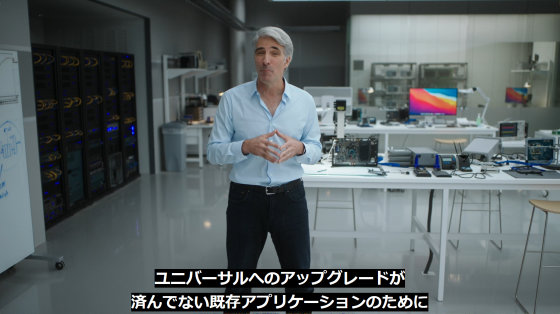
That is 'Rosetta 2'.

On the M1 system, Rosetta can seamlessly run applications built for Intel-based Macs. Therefore, you can continue working on the Fusion 360 project without updating the application ......

Take your favorite games to the next level. All this thanks to the Metal and M1 chips. Some of the most graphics-intensive applications run faster under Rosetta than they did natively on previous-generation Macs with integrated graphics.

The transition to M1 and beyond is also important for developers. M1 scales up the architecture developers are already familiar with on iPhone and iPad, enabling code optimization across applications for all operating systems.
And the new Mac can do things that no Mac has ever been able to do. For the first time, you can run your favorite iPhone and iPad applications directly on your Mac.

This will increase the number of games that can be played and the content that can be auditioned.

Together, these three give users access to the largest collection of applications ever on their Mac.

Related Posts:





